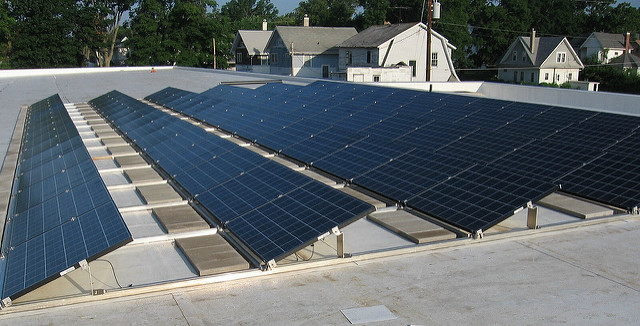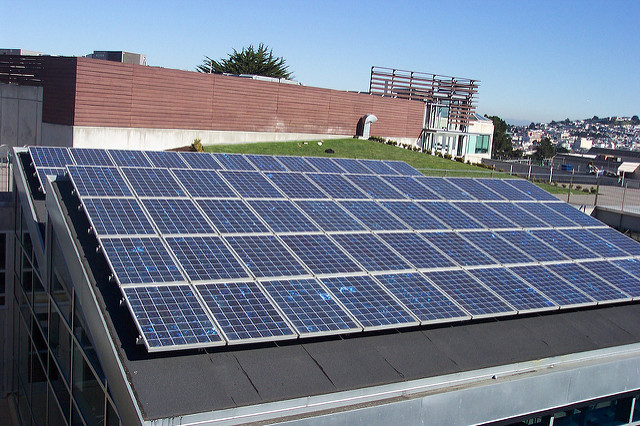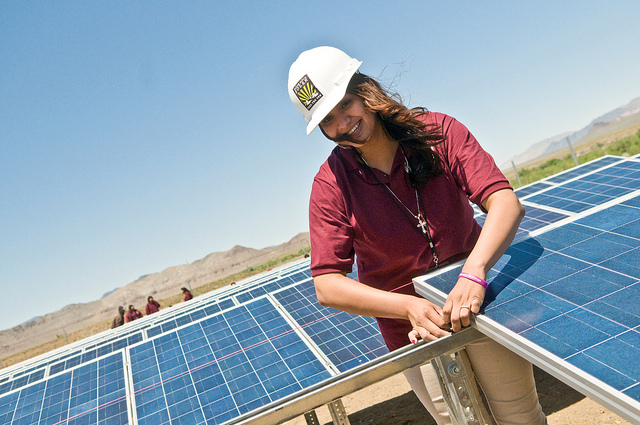
If you’re thinking of installing a residential solar energy system in your home, you’ll likely be dealing with solar photovoltaic (PV) panels. Does all of this terminology make you nervous about what you’re getting into? Well, the terminology is pretty scientific, but you’ve likely used solar photovoltaic powered devices before. Ever had a pocket calculator powered by the sun? Then you’ve used solar photovoltaic technology. While solar energy has really been gaining steam in the past few years, solar photovoltaic technology has been around for decades. In fact, NASA has been using it to power spacecraft during space missions since the 1960s. Even earlier than that, physicists Edmund Bequerel and Albert Einstein were studying the photoelectric effect in the mid 1800s and early 1900s.
How Does Photovoltaic Energy Work?
The solar photovoltaic cells in your solar panels are the mechanisms which convert sunlight into energy. When you install solar panels on your house, the PV cells convert sunlight into direct current (DC) and an inverter connected to the system is what converts direct current into alternating current (AC) – which is the type of current needed to power your household appliances. This power runs through your electrical panel box, just like electricity you get from the grid, and you can potentially run your entire house on solar power than power taken from the grid.

Most residential solar energy systems are still connected to the grid. This is to allow for uninterrupted electricity in occasions when you don’t have enough solar energy to continue to power your house (e.g., on cloudy days or during the night). If you generate enough energy from your solar panels such that you have “extra” energy left over, it will get fed back to the grid and you will get credit for this contribution of energy. Termed “net metering,” this transfer of electricity allows some customers to still maintain a $0 electric bill even when using the utility company’s energy from the grid.
When it comes to the process of solar energy conversion, the sun releases photons. When this sunlight hits the semi-conductor metal of the photovoltaic panels, electrons are released, which is what creates direct current electricity. Solar panels are made up of hundreds of photovoltaic cells, which are most often composed of silicon as the semi-conductor.
![]()
The generation of electricity is based on the creation of an electric field. An electric field is created when opposite charges interact (similar to the poles of a magnet). The silicon in the panels give off both positive and negative energy to create this electric field. When sunlight hits the cells, electrons are released from the movement of the atoms. The interaction between the photons released from the sun and the electrons released from the solar cell are what creates the direct current of electricity. Metal conductor plates located within the solar panel are the mechanisms used to allow the electric current to travel through wires. Once moving freely through the wires, the current will power your house, like other sources of electricity.
Multiple solar photovoltaic cells are wired together to form a module (i.e., panel). These panels are connected together to form the main body of your solar energy system. Having enough solar panels installed in your home or business can then power the majority of your space, of course varying based on your climate conditions, amount of sunlight captured, and the efficiency of the solar panels you install.
What are the Benefits of Using Solar PV?
There are a number of benefits of using solar energy – most of them center around cost savings and environmental benefits. Here’s a list of the most prominent benefits of using solar energy produced from photovoltaic cells:

* Cost savings: While the sun is free, your solar energy system will cost you some money. But, the cost savings come in once you’ve paid for it all and you are reaping the benefits of not having to live completely off the grid and relying on your local utility company, and the inevitable rising costs of electricity.
* Reduced carbon emissions: Here’s one for the environment. When you use solar energy, less carbon emissions are being released into the environment from conventional power stations.
* Tax credits: Not only will you get to save money from your utility bill, you’ll also get tax credits and tax benefits from the government and local and state taxes for install solar energy systems.
* Clean energy: Solar energy is a clean energy source. You are able to power your entire house from the sunlight, and in the grand scheme of things, it’s easy to install and maintain.
* Easy Maintenance: There’s not much that needs to be done once your solar panels are installed. You rarely have to clean the panels, as rain will clean them off naturally, and there’s not much upkeep you need to do either. The only cost you’ll generally have to incur during the lifetime of your solar energy system (which is about 25+ years) is the replacement of your inverter, probably just one time. Most of your parts are covered under warranty as well.
* Versatility: Solar photovoltaic panels can be installed on your roof, in ground systems, and in virtually any climate and environment.
What’s my Return on Investment?
How much will you save from installing a residential solar energy system? The average 5kW system that is installed in homes can average about $12,500 to $15,000. Note that solar energy system pricing has dropped dramatically over just the last few years alone. It’s becoming more and more affordable and more and more convenient for use.

So, when will your savings start and when will you hit your return on investment? Well, your cost savings will happen immediately. Just compare your first utility bill pre- and post-solar energy installation and you’ll realize how much you are saving every month from relying solely on the grid for power. By the time the system has paid for itself in cost savings, it’ll only take about 5 to 10 years – this is of course dependent on the size of your system, the type of panels you get installed, and also the climate you live in. Naturally, residents in high-sunshine states like California and Arizona will garner much more solar energy conversion than residents with similar systems in Seattle and Boston.
Solar energy is no longer something that is “coming” in the future. It’s here and the solar business is thriving. Costs are dropping every day and systems are getting more and more advanced and efficient. You might readily notice solar panels set up on homes you pass on your drive home or in fields used by commercial businesses. What an incredible time to save money and invest in solar energy.

